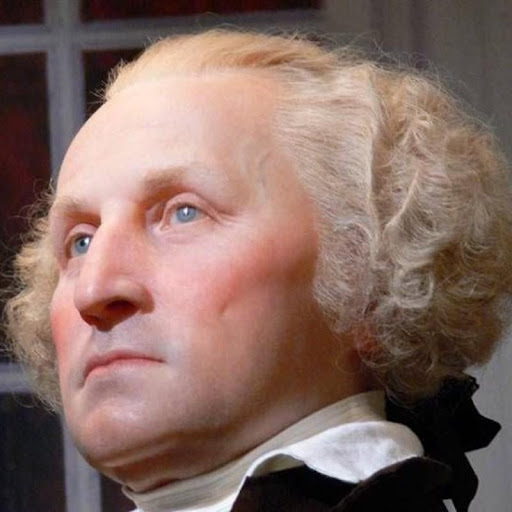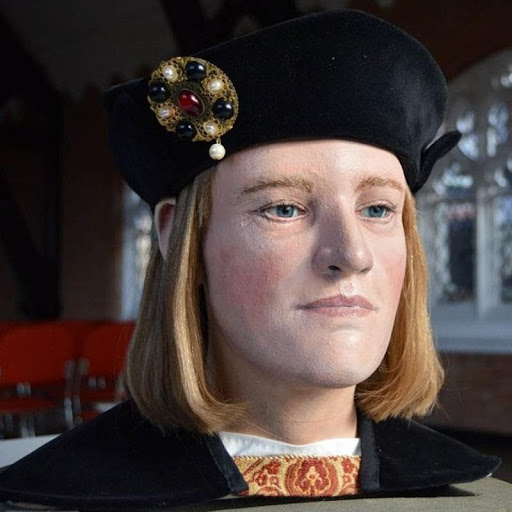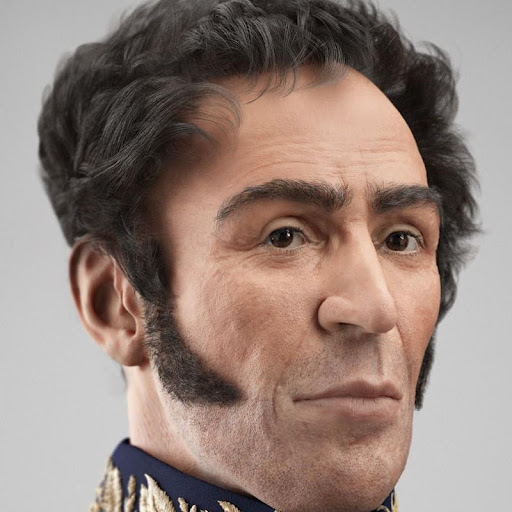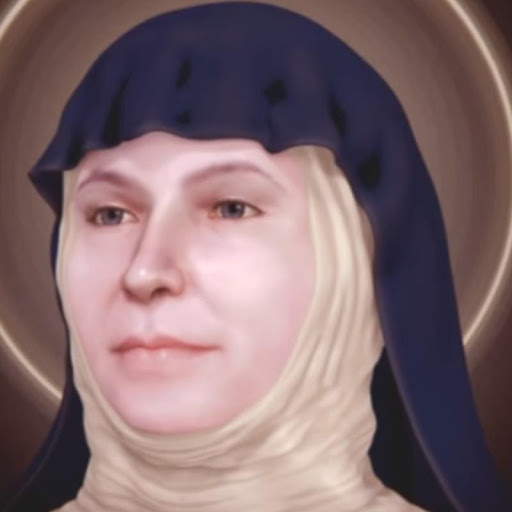
[adiqted_pagination]
Some people are so influential that they shape the course of history. However, there is only so much we can do to understand what these important people actually looked like. Though many of them were captured in paintings and sculptures by talented artists, it was common for these to be adjusted to ensure the subject looked their best. Think of it as an old-fashioned version of the Photoshopping and airbrushing we see today.
It’s no secret that historical figures were often portrayed very differently from how they looked in real life. When it comes to the portraits of many familiar faces, we have to take them with a grain of salt. The pictures of famous figures that you remember are not representations of reality. However, thanks to the wonders of science, we are now able to get a glimpse at their true forms. The following pictures reveal everything.
King Tut

The Egyptian pharaoh Tutankhamun, more commonly known as King Tut, was arguably the most famous of the ancient Egyptians. It is thanks to Howard Carter’s excavation in 1922 that we are able to see the face of the infamous pharaoh.
Tutankhamen was a boy-king who ruled for 10 years, and it is believed that he died from an infected broken leg. DNA studies on his mummy have shown that he also suffered from a bone disorder that made his skeleton quite fragile. On top of this, he endured several bouts of malaria and a cleft palate.
Emperor Nero

Nero ruled Rome from 54 to 68 CE and was the last emperor of the Julio-Claudian dynasty. Nero’s reign began with the assassination of his mother. He was a popular emperor, but his reputation plummeted due to his massive tax increases and excessive spending.
The Nero figure in the image above is a recreation of the Roman Emperor made by Spanish artists in 2019. This model was based on descriptions, drawings, and busts of Nero. It is believed that he started the great fire of Rome to achieve his political agenda. When he killed himself, legend has it that he said, “What an artist dies in me!”
Robert the Bruce

Robert’s victories in Scotland earned him the nickname “the Hammer of the Scots,” but he was also known as an able leader and a responsible king. He set up sound government institutions and finally settled Scotland’s long-standing dispute with the English. In 1314, he obtained a charter from King Edward II of England recognizing Scotland’s right to independence.
If you’ve ever wondered what the face of Robert I looked like, well, now you know. Researchers at the University of Glasgow used casts from the skull believed to belong to the king of Scots in order to create a bust using Face Lab technology. The bust was made using plasticine and human hair, while researchers also used historical and archaeological evidence to create Robert I’s likeness.
Julius Caesar

Caesar was a general and politician whose military conquests expanded the Roman Republic. He crossed the Rhine River and later invaded Britain, but after refusing to step down from command to avoid arrest, he re-entered Rome, triggering a civil war.
This bust was created from a scan of a Roman marble portrait of Julius Caesar. Caesar, one of Rome’s greatest military leaders, rose to power after winning the Roman civil war in 45 BCE. He then became a dictator. Caesar proved himself to be a relatively fair leader but was assassinated by members of the Roman Senate in 44 BCE.
Nefertiti

The most famous bust of Nefertiti is believed to have been created by the sculptor Thutmose in Amarna, Egypt in 1345 BCE. The sculpture was discovered in Thutmose’s workshop in 1912. However, with 3D imaging, experts were able to determine what this ancient queen might have truthfully looked like in person.
Elizabeth Daynes is a London-based paleoartist who recreated Nefertiti’s face and received widespread media and public attention for her work. The recreation of Nefertiti was commissioned by The Travel Channel’s documentary show Expedition Unknown. There was some controversy surrounding the color of the Egyptian queen’s skin.
Cleopatra

Cleopatra ruled Egypt along with her brother Ptolemy XIII for about three decades. She ascended to the throne at the age of 18 after her father died. Five years later, her brother’s advisers succeeded in running Cleopatra out of Egypt, but with the help of Julius Caesar, she was reinstated a few years later.
The image above shows one of the most accurate depictions of Cleopatra. It’s important to note her masculine features and figure. As history has proven, it was not her looks that made her so charming. She was able to seduce the mightiest men in all of Rome with her intellect and cunning ways.
Queen Elizabeth I

Her father Henry VIII was one of the most infamous kings of England. Her mother was Anne Boleyn, Henry’s second wife. However, Henry annulled their marriage shortly after Anne gave birth to Elizabeth. Because of this, Elizabeth was technically illegitimate and not eligible to be queen. However, she became queen in 1558.
The Armada Portrait of Elizabeth I is one of the most famous images of her. The original painting was destroyed during the Second World War, but the Queen’s House in Greenwich has incorporated a new copy, accompanied by an animatronic face that blinks and gives the appearance that it’s thinking.
William Shakespeare

Shakespeare was a playwright and poet who remains arguably the most popular and greatest writer in the English language. Thanks to him, we have phrases like “basket case” and “cold comfort.” We also have memorable lines like, “Out, out brief candle! Life’s but a walking shadow,” from his classic play, Macbeth.
A team of archaeologists from the University of Dundee analyzed a death mask that was made after William Shakespeare’s passing on April 23, 1616. The computer-generated image is so detailed that it even shows facial hair, the pores on his skin, and the folds of his eyelids.
George Washington

He was the leader of the Continental Army during the Revolutionary War. Washington was also the first executive to serve under the US Constitution (1789-97). The Virginia-born former British soldier is remembered for his courageous actions during the war and his leadership in establishing the new republic.
This is the face of George Washington according to evolutionary anthropologists at the New Jersey Medical School. The researchers used computer-generated imagery to construct a detailed virtual sculpture of the first President of the United States, and it does an extraordinary job of bringing his facial features to life.
Mary, Queen of Scots

The Scottish Parliament named Mary Queen of Scots when she was just six days old after the death of her father, James V. She grew up in the French court and eventually returned to Scotland in 1559. She became Queen of Ireland when she married the man who was King of Ireland (and England, at that time), Lord Darnley.
The face of Mary, Queen of Scots has been brought to life with the use of 3D imaging technology. Professor Caroline Wilkinson of the Department of Archaeology and Forensic Sciences at Dundee University collaborated with BBC Alba to create the facial reconstruction.
Richard III

He may have had one of the shortest reigns in English history, but it’s his death that will live in infamy. The story in Shakespeare’s play and the events that followed led historians and the British monarchy to believe that Richard III was a tyrant and a villain.
In 2012, the remains of King Richard III were discovered below a parking lot in Leicester, England. The lead artist for the project pictured above, Dr. Caroline Wilkinson, stated that she was able to recreate his facial features by studying his remains and historical documents.
Meritamun

The skull of an ancient Egyptian woman was discovered in the archives at the University of Melbourne. Her name is Meritamun, meaning “beloved of the god Amun.” How did a skull from ancient Egypt end up in the University of Melbourne?
Though Meritamun’s mummy was found in poor condition, researchers were able to gather information from it. They determined that she was 18 to 25 years old when she died and that her hair was long and brown. Her body had a lot of teeth in bad condition, indicating that she probably had a fondness for sweets.
The Lord of Sipan

One of the most significant archaeological discoveries was made in 1987. In a pre-Incan tomb uncovered in Peru, archaeologists found the remains of Lord of Sipan and his treasures. The tomb is considered to be one of the most important archaeological discoveries in modern history.
Following the excavation, the crew had to work on fixing the skull since it had broken into 96 pieces. Modern technology helped tremendously in reconstructing the broken skull. When they discovered that his body had several fractures, they decided to use photogrammetry – a process in which cameras are set up at different angles to create a 3D image. The results are shown in the image above.
Saint Anthony

Saint Anthony of Padua was born on June 13, 1195, in Lisbon, Portugal. He was a Franciscan monk who became one of the greatest preachers since St. Paul. He was known for his eloquent sermons and his miraculous powers of healing.
For the facial reconstruction, scientists examined the remains of Saint Anthony when his body was exhumed from its tomb in Padua in 1595. They took a fragment of his jawbone and a piece of his tongue. It has been said that when Saint Anthony died, children cried in the street and bells rang by themselves.
King Henry IV

King Henry IV was born in 1553. He inherited the throne of Navarre from his mother. Not only did he become the King of Navarre in 1572, but by 1610, he had also taken over the throne of France. His reign was short-lived, but he was still seen as one of the best kings in the history of France.
Philippe Charlier, Philippe Froesch, and a team of researchers at the Plastination Laboratory of Heidelberg, Germany, used 3D imaging to recreate Henry’s face — and what a face it is! His features are alive with color and character, making him look like he truly has been brought back to life.
Johann Sebastian Bach

Anyone who is familiar with the Baroque Era knows Bach had a significant impact on the history of music. Johann Sebastian Bach was a famous composer who arrived on the scene at the end of the Baroque period. Today, his compositions are performed by musicians and artists all around the world.
Bach’s grave was lost to history after his death in 1750. It wasn’t until two centuries later that the composer’s remains were found in the cemetery of an abandoned church in Germany. By analyzing his skull, Dr. Caroline Wilkinson and her team were able to recreate the composer’s face.
Simón Bolívar

One of the most influential figures in Latin American history, Simón Bolívar was born into wealth in Venezuela. After studying in Spain, he joined the liberation movement against the Spanish Empire and became known as El Libertador (“The Liberator”). He died at the age of 47 from tuberculosis.
This is the first forensic reconstruction of Simón Bolívar. For over a year, a team of experts, with a little help from the government of Venezuela, recreated the face based on historical documents and photos of the glorious past of Venezuela and the legendary general Simón Bolívar.
Nicolaus Copernicus

Copernicus was a Polish polymath who made contributions to many different areas of science, including astronomy, mathematics, civil engineering, and geography. His studies helped tear down the ancient belief that Earth was the center of the universe. He was a truly remarkable man who contributed greatly to the field of science.
Copernicus seemed to be a fairly gaunt, hollowed-out man from the old renditions of him. However, thanks to advancements in technology, specialists have been able to make a more accurate rendering of him. The images you see above are closer to the true appearance of Copernicus.
The Lady of Cao

In 2005, archaeologists from the El Brujo Archaeological Complex uncovered a burial site containing a number of artifacts from the Moche civilization. A mummy dubbed “The Lady of Cao” was among the items found. She was wrapped in a style of cloth that suggested she belonged to an upper-class family.
While it is not clear what societal role the Lady of Cao held in her lifetime, one thing is for certain: she was an elite member of Mayan society, and most assuredly a candidate for sacrifice. Her remains are kept at El Brujo Museum where visitors can view her through a strategically placed mirror.
Saint Nicholas

A group of Christian elders decided to make sure that the deeds of Saint Nicolas would live on forever, which is how he was named the patron saint of Russia. Two books about him were written during the 9th century, and these contributed to him being named the patron saint of Greece.
St. Nicholas’ remains were discovered in a church in Myra, Turkey. His body was remarkably well-preserved – even the well-known broken nose was evident. This provided Dr. Wilkinson with an amazing opportunity to make a CT scan and create the accurate image shown above.
Giovanni Battista Sidotti

Giovanni Battista Sidotti was born in 1668 in Florence, Italy. As an Apostolic missionary, he went to Japan to spread Christianity at a time when it was extremely dangerous to do so. He disguised himself as one of the Samurai warriors but failed. The Japanese captured and imprisoned him, and he eventually died in 1714 due to malnutrition.
Forensic anthropologists discovered Sidotti’s remains in an excavation project. His body was remarkably intact for having been buried for so long. Despite the damage to his skull, forensic anthropologists were able to recreate Giovanni Battista Sidotti’s face thanks to the other remains that were found.
The Mycenean “Griffin Warrior”

An ancient tomb was discovered in 2015, and with it, came some fascinating discoveries. Archaeologists found a skeleton along with 14,000 objects, including weapons and jewelry. A drawing on the wall of the tomb had some writing on it, but its meaning remains unclear. Researchers believe the remains may be from a Mycenaean priest or warrior.
The reconstruction shown above was based on the interpretation of the skull and the art in which he was depicted. His remains indicate that the Griffin Warrior would have been a man of around five foot five inches with long hair. Interpretation of the surrounding artwork supports him having close-set eyes and a prominent jaw.
Dante Alighieri

The Divine Comedy is an epic poem written by Dante Alighieri in the early 14th century. It has long been considered one of the greatest literary works of all time. Though it was written many centuries ago, it remains relevant and interesting to modern readers.
This rendering of Dante Alighieri is based on his skull, which was found in 1920. The skull was in poor condition, so additional inspiration for the recreation was gathered from all existing images of him. The model features the same hooked nose and stern face common in pictures of him. However, this rendering shows him with bigger eyes, a softer facial expression, and a more rounded jaw.
Maximilien Robespierre

Maximilien Robespierre was a prominent lawyer and politician during the French Revolution. He played a key role in establishing the First French Republic and was elected deputy to the National Convention. However, his role as head of the ‘Reign of Terror’ left him with a controversial legacy.
This is a rendering of what Maximilien Robespierre, the face of the French Revolution, may have looked like. The image was made by a forensic pathologist, Philippe Charlier, and a facial reconstruction specialist, Philippe Froesch. The model was completed in 2013, and its creators used Robespierre’s death mask (which was made by Madame Tussaud).
Mozart

Mozart created masterpieces from the age of five onward and was recognized as a promising composer even in his youth. Mozart became famous all over Europe almost immediately, and it is said that every important city wanted to have him as a citizen. In 1786, he went to Vienna, where he lived until his death.
Mozart’s skull was uncovered in the year 1801 when his grave was opened in order to move his remains to a more prominent location. His skull is conserved at the Museum of the History of Medicine at the University of Vienna in Austria. The above rendering was created by Pierre-François.
Ramses II

Born in 1303 BCE, Ramses II became pharaoh of Egypt in 1279 BCE. During his 52 years on the throne, he led numerous military campaigns and built magnificent monuments. His reign was a prosperous one for Egypt, ushering in one of its most creative times, with great developments seen in art and literature.
The mummy of Ramses II has been moved at least three times throughout history. He was originally laid to rest in a tomb in the Valley of the Kings. In 1881, his remains were discovered and are now on display at the Egyptian Museum in Cairo.
Tiberius

The Roman emperor Tiberius ruled from 14 CE to 37 CE. He took the throne after the death of his stepfather, Emperor Augustus. He focused on controlling corruption and quelling power struggles in Rome, and this is possibly what led to his untimely death at Lake Misenum in 37 CE.
Tiberius didn’t die young (he was nearly 78) but his death was odd. It seems he may have been poisoned by Caligula, and then when that didn’t work, smothered with his own bedclothes. Whatever the case, great confusion surrounded his death and it seems it was not of natural causes. This figure shows the color of his eyes, his wrinkled forehead, and his distinct nose and bone structure.
Marcus Agrippa

Though he was known for his military achievements, Agrippa was also a Roman scholar and architect. Some of the buildings you’ll see if you visit Rome were designed by this genius. He was also one of the influential people who made Rome one of the most powerful empires in the world.
Marcus Agrippa was Augustus’ right-hand man. When Agrippa died of an illness in 12 BCE, Augustus made sure to raise his children and see to their education. Three months after his death, Augustus had Marcus’ body transported from Campania to Rome and placed in a mausoleum he had built.
Huarmey Queen

The Huarmey Queen is the earliest known figure in Peru’s Wari (Huari) culture and was one of the most important people in her society. She was discovered in Humay, an archaeological site located in the Ancash region of Peru, which was home to the Wari (Huari) people from 700 to 1000 CE.
This is a reconstruction of the face of the Huarmey Queen. She was found in a seated position, surrounded by noblewomen who were buried with her. The burial site contained hundreds of artifacts, including silver bowls and gold, copper, and silver jewelry.
Saint Zdislava Berka

Saint Zdislava Berka, Patroness of the Czech Republic, was born in 1220. She later became the Duchess of Lemberk and wife of Duke Havel of Markvartice. She is considered to be one of the most cherished Saints in the Czech Republic as she is a true example of charity and generosity.
If you ever wondered what Saint Zdislava Berka looked like, this is it. Her remains made it possible for forensic anthropologists to create this rendering of what she would have looked like. Her body remained remarkably well-preserved, and this allowed for an accurate reconstruction. The cheekbones and jaw structure were very much intact.

![5 Reasons You Should Travel Alone Airplane [image source: chau nguyen/ http://thedevilhatessweatpants.blogspot.com.au ], crowd ink, crowdink, crowdink.com, crowdink.com.au](https://crowdink.com/wp-content/uploads/2016/08/Chau-airplane-218x150.jpg)























